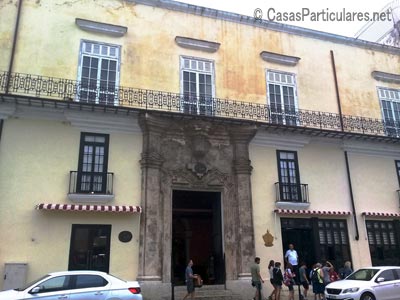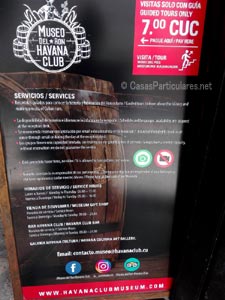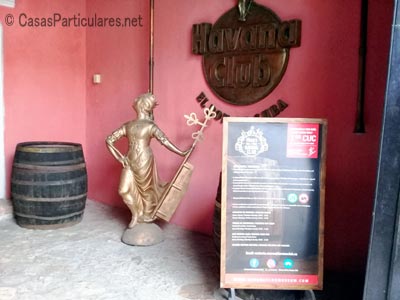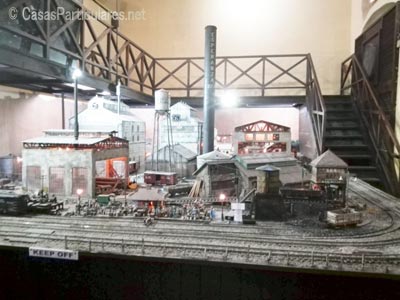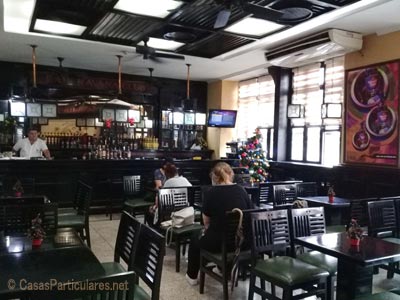The Museum of Rum
By Danil Ren, representative of the agency, translated from Spanish by Danil Ren.
The Museum of Rum, located in Old Havana at 262 San Pedro Street, between Sol and Santa Clara, is an example of Cuban tradition and culture. It is the headquarters of the Havana Club, the main brand of rum in Cuba, and also serves as a museum and a place for tasting and demonstrating the process of preparing rum. Halfway between Plaza de las Palomas and Plaza Vieja, the Museum of Rum is available to all those who want to discover the best of Old Havana.
Its main purpose is to make known the Cuban rum of the Havana Club brand, through its tasting and the demonstration of its production process. Besides being the objective of the institution, it is also the main attraction of the place. Cuban rum is part of the history, traditions and culture of Cuba, which are perfectly represented in this place, since Cuban rum, which emerged in 1878, is considered one of the hundred best rums in the world.
Short history of the institution
The mansion where the Museum of Rum is located is a colonial house that was owned by Don José Fajardo Covarrubias and Doña Josefa Montalvo, a powerful family of the Havana society of the 18th century. Later, in the 19th century, Bishop Espada chose this palace to establish the headquarters of the Episcopal Palace and finally the mansion was bought by Don Ramón de Herrera, the "Conde de la Mortera", a Spanish businessman and benefactor, who installed in this house the offices of his shipping company. From then on, he constituted the accommodation of companies and diverse enterprises.
In 1961 the building became the headquarters of the Mambisa Navigation Company and in 1965 it housed the Academy of Sciences of Cuba. During 1968 it was assigned to the National Council of Culture to become the House of the Young Creator until it became the Museum of Rum on March 31st, 2000.
A walk through the Museum of Rum
Arriving at the museum is a portal decorated with various wooden barrels, a replica of La Giraldilla and the Havana Club brand.
The Museum of Rum offers the service of guided tours. The daily schedule of visits establishes different schedules according to the languages (Spanish, English, Italian, French and German). The tour of the Museum of Rum begins with the ringing of a bell, by one of the visitors. During the colonial period, this sound indicated the beginning of the work in the cane fields.
The first thing you find when you visit the Museum of Rum is a projection room where you can see a video about the introduction of sugar cane in Cuba in 1493 and the evolution of its processing until now.
Then comes the Cane Gallery, where you can learn more about the origin of sugar cane, the artifacts used to extract its honeys. With the development of the sugar industry, the railroad was introduced in Cuba as an efficient way to speed up the production process and the processing of the honeys obtained from the cane, which were even exported. In this room, the visitor can appreciate a moderate-sized model of a steam locomotive.
The final obtaining of the rum, implies the development of multiple processes. Aging, fermentation, distillation and filtration are recreated in the last rooms of the museum. The type of wood used to make the barrels required for rum production is fundamental, as is the climate, the quality of the soil and the raw material. All are fundamental factors in obtaining a high quality final product.
Of course, as in the case of all branded drinks, the production of good Cuban rum also involves a secret stage. This stage is only known by certain masters who pass on this knowledge exclusively to their successors and respect a valuable ethical code that prevents them from revealing the formulation. The museum guides do not forget to mention and explain this factor without revealing this stage.
The tour concludes with a rum tasting of Havana Club 7 years at the bar on the main floor of the museum. This bar can be visited directly, independently of the tours. Also the barista does not omit the famous gesture of offering the first drink to the saints, this is a deep-rooted Cuban custom that can be interpreted as a powerful superstition inherited from the ancestral cultures and is done by pouring on the floor some sips of rum, before serving the first drink from each bottle.
The Museum of Rum also offers a point of sale, a shop where you can buy different products of the brand Havana Club, of different presentations and aging. For example the Añejo Especial, Añejo Reserva, Añejo 7 años and the Gran Añejo 15 años. But there are even more prestigious bottles, whose price is around one hundred dollars. Finally, it is also possible to buy other souvenirs related to the Havana Club brand.
In short, any visitor to the Museum of Rum can define their guided tour as an extraordinary learning experience with a taste of Cuba.
The Museum of Rum is open Monday to Friday from 9am to 5pm, while on weekends it is open from 10am to 4pm.







